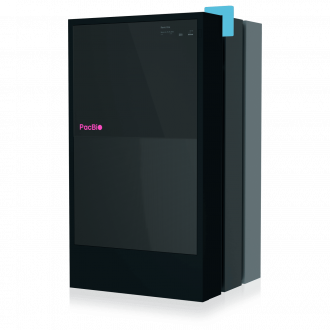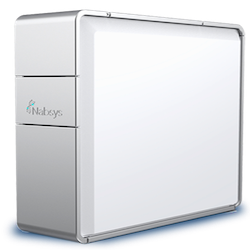New Instruments:




New Applications:
Cell-free DNA sequencing:
Cell-free DNA sequencing: Cell-free DNA (cfDNA) refers to all non-encapsulated DNA in the bloodstream. cfDNA are nucleic acid fragments that enter the bloodstream during apoptosis or necrosis. A portion of that cell-free DNA may originate from a tumor clone and is called circulating tumor DNA (ctDNA). cfDNA sequencing will therefore provide a quick and easy way for early cancer detection. The R&D team is currently in the process of developing adapted protocols for short read and long read cfDNA sequencing.
Single cell RNA-seq on Nanopore ONT:
Single cell RNA sequencing (scRNA-seq) technology has become the state-of-the-art approach for unraveling the heterogeneity and complexity of RNA transcripts within individual cells, as well as revealing the composition of different cell types and functions within highly organized tissues/organs/organisms. ONT’s high-throughput long read sequencer, PromethION, can sequence full length cDNA generated from single cell RNA-seq captures and detect not only the gene expression, but also the isoform information at single cell level. The adaptive sampling on ONT can selectively sequence the interested genes and increase the coverage of the region of interest. Our R&D team is establishing the protocol for single cell RNA Iso-seq on ONT with or without adaptive sampling.
ResolveOME:
BioSkryb Genomics has developed a unified system named ResolveOME for single cell whole transcriptome and whole genome amplification sequencing analysis. The ResolveOME system allows comprehensive analysis of the transcriptome and genome in parallel from the same cell. It provides high resolution accuracy of genome analysis down to the single base level combined with the comprehensive full length mRNA transcriptome and enables the understanding of interplay of these omic layers within and between individual cells. Our R&D team is evaluating the performance of this protocol.
Illumina Complete Long Read Sequencing Technology:
Generates contiguous long-read sequences with N50 of 5–7 kb with some reads > 10 kb. It has the potential to improve the efficiency and accuracy of some existing DNA sequencing applications while increasing the resolution of clinically important genes. The technology simplifies de novo sequencing because large repeat regions in the DNA fragments can easily be spanned.
5-hmC and 5mC Detection and Analysis:
Discrimination between 5-mC and 5-hmC in CCGG sequences using enzymatic digestion and PCR amplification using the The EpiMark® 5-hmC and 5-mC Analysis Kit. This can also be used to analyze and quantitate 5-methylcytosine and 5-hydroxymethylcytosine within a specific locus.
